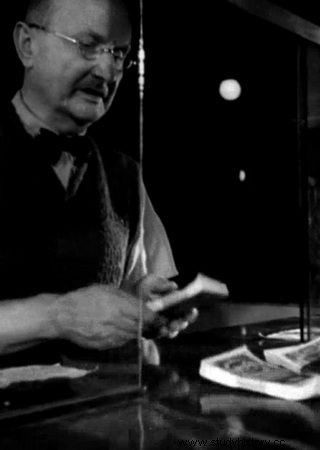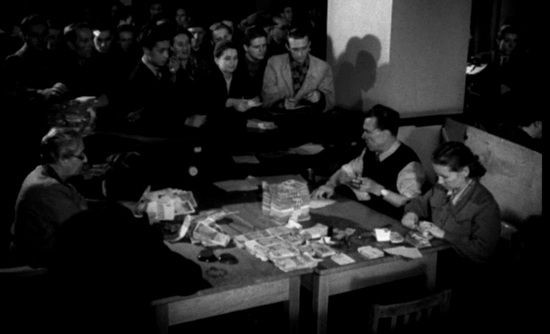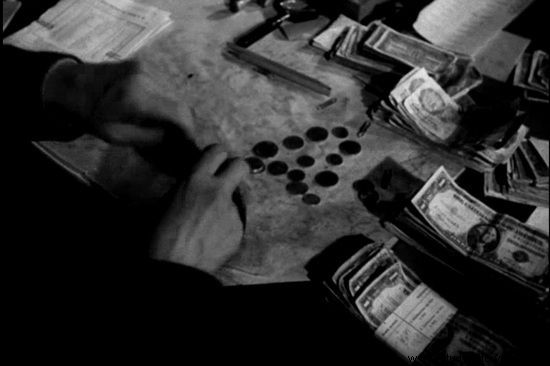At the end of the 1940s, Poland was slowly recovering from the devastation of the war. The communist authorities have just announced a six-year plan, the aim of which was to decisively accelerate the industrialization of the country. Its implementation, however, was associated with enormous costs, so the question arose:where to get the money for all this? It was easiest to take them from the citizens!
Of course, it had to be done in such a way that the public would not hold it against the authorities for robbing him. It would be best if the working people of towns and villages would even thank the thieves! A banally simple recipe was chosen:it was decided to convince people that they had not been robbed at all, but on the contrary, they had done them a great favor. Thus, the Polish communists in the fall of 1950 took 2/3 of their savings from Poles on the occasion of the zloty denomination.
We don't rob you at all, we do it for your own good

In connection with the currency reform, all owners of savings above 100,000 PLN they lost 2/3 of their money. The photo shows a frame from the Polish Film Chronicle.
The governors of the so-called People's Poland, who took care of the "good" of Poles, of course prepared the entire action in secret, not informing anyone about the planned "jump to the cash" of the citizens. When everything was ready, on October 28, 1950 (on Saturday), the bill on changing the monetary system was introduced to the marshal's staff. .
Behind this enigmatic term was a seemingly ordinary denomination of the zloty. However, it was easy to recognize that it was about something much more important:the vote took place late in the evening, and the deputies ... were forbidden to leave the Sejm building and had no access to the telephone. All these extraordinary measures should come as no surprise, after all, the goal was to ... take away from citizens about $ 750 million at that time (that is, approximately $ 7 billion today!) .
The essence of the swindle (as it should be called) consisted in the "non-equivalent" exchange of old zlotys for new ones. What did that mean? Well, prices, wages, liabilities, bank and savings deposits (but only up to 100,000 old zlotys) were converted in the ratio of 100 to 3, while the cash owned by the population was exchanged in the ratio of 100 to 1.

On the swindle of the 1950 currency reform, the communist government earned around 750 million dollars at the time. The photo shows a frame from the Polish Film Chronicle showing the money exchange.
The victims of financial fraud were also those who bought the Bonus Loan for the Reconstruction of the Country in 1945. By the way, the government forbade citizens to possess foreign currencies, gold and platinum.
The penalties for foreign exchange offenses have also been tightened . The mere possession of foreign currencies threatened with fifteen years of imprisonment, and trading with the death penalty!
Of course, the communists wanted to show at all costs that the whole operation was aimed only at the good of the citizens, therefore a real propaganda offensive in the press and radio began a day after the bill was passed by the Seym. In the first place, it was argued that the value of the new Polish currency […] is pegged in gold which was supposed to ensure the stability of the new currency and curb rampant inflation.
Next, of course, was the "class argument". After all, savings not allocated to PKO were supposed to have only elements of speculation and exploitation . Therefore, as the then press wrote:
The implementation of the currency reform will deprive the speculative elements of a large part of the capital they have looted and will undoubtedly result in a further improvement in the market situation for the benefit of the working population.

On the occasion of the currency reform, citizens were forbidden to possess foreign currencies, gold and platinum. Breaking the ban was punishable by many years of imprisonment and even the death penalty. The photo shows a frame from PPKF.
This "argument" really had little to do with reality. The speculators continued to invest their savings in gold and foreign currencies, which they were not willing to hand over to the state despite draconian penalties.
At the same time, the authorities maintained that the currency reform would stimulate further improvement in the economic situation and would contribute to an increase in the living standard of the average worker.
Exchange at an express pace and poor results

The inspiration for the article was an album with a text by Witold Sienkiewicz entitled "Poland since 1944. The latest history" (Demart publishing house, 2011).
Almost simultaneously with the propaganda offensive, the exchange of old zlotys for new ones was launched. I must admit that everything has been prepared down to the smallest detail. The whole action lasted just over a week (October 30 to November 8, 1950) and the military used to distribute money around the country.
Did the money change stop inflation and improve the economic situation? The answer of course is no. As Witold Sienkiewicz notes in the book "Poland since 1944. The Latest History":
[already] in 1951 there was a significant decline in the value of the zloty. The enormous financial needs of the state related to the implementation of the six-year plan resulted in additional money issue, the level of which doubled in the years 1949-1955. This fueled inflation to an average rate of 19%.
As you can see, it was not enough to steal $ 7 billion to build socialism ...
